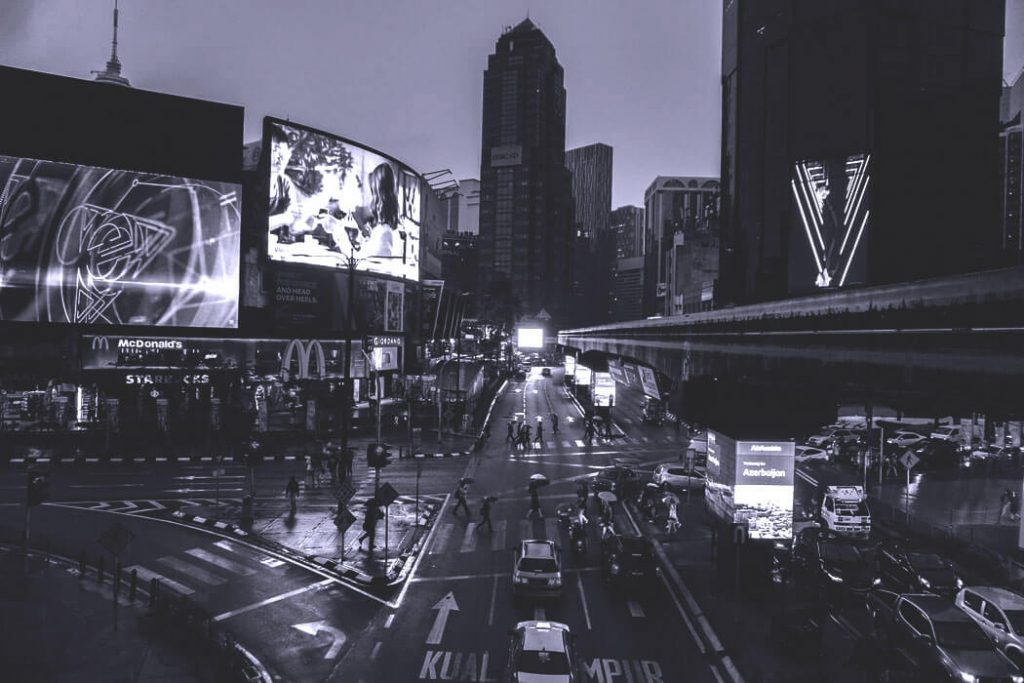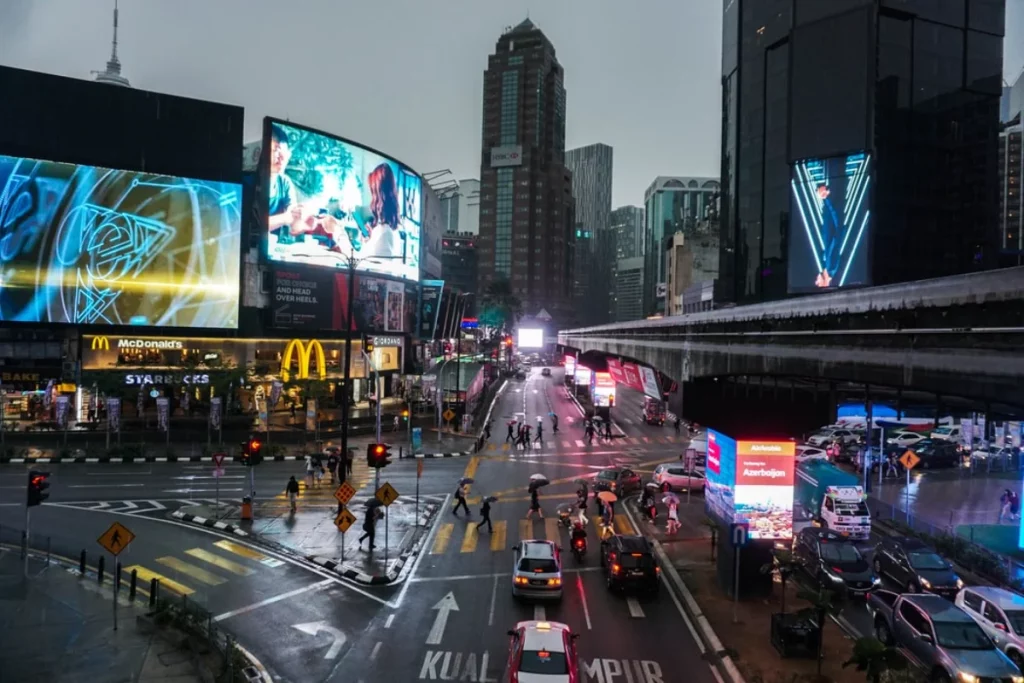What is transit advertising? In the ever-evolving world of marketing, advertisers are continually seeking innovative ways to capture the attention of their target audience. One such method that has been gaining momentum in Malaysia and around the globe is transit advertising. Transit advertising is a dynamic approach to reaching consumers as they move through urban environments, and it encompasses a range of strategies, including advertising on public transportation vehicles like buses, trains, and MRT (Mass Rapid Transit) systems. Additionally, the integration of Digital Out-of-Home (DOOH) advertising in transit spaces has added a new dimension to this marketing landscape. In this article, we’ll delve into the world of transit advertising and explore how it is reshaping the marketing scene in Malaysia.
Advertising on Public Transportation: Buses, Trains & MRT
Buses – Rolling Billboards on the Move
One of the most visible forms of transit advertising in Malaysia is the use of buses as rolling billboards. This approach involves wrapping buses with eye-catching advertisements that can’t be missed as they traverse the bustling streets of cities like Kuala Lumpur and Penang. Buses provide a mobile canvas for advertisers to display their messages, making them impossible to ignore for both pedestrians and fellow motorists.
The benefit of bus advertising is its extensive reach. Buses cover extensive routes, ensuring that your message reaches a diverse audience from various demographic backgrounds. Whether it’s promoting a local business or a national campaign, buses offer an efficient way to get the message across.
Trains – Connecting with Commuters
Trains are another prominent medium for transit advertising in Malaysia. With the country’s expanding railway network and the introduction of new MRT lines in cities like Kuala Lumpur, advertisers have a captive audience during the daily commute. Train advertising can take the form of station posters, in-carriage ads, and even exterior wraps.
For advertisers, the advantage of train advertising is the ability to connect with commuters during their daily journeys. This creates an opportunity for repeated exposure to the brand or message, which can lead to better brand retention and recall. Moreover, train stations themselves become strategic advertising spaces, allowing businesses to target both travellers and those waiting for their train.
MRT – The Future of Transit Advertising
Malaysia’s MRT systems are setting new standards for transit advertising. These modern and efficient transit systems are designed with advertising opportunities in mind, offering a variety of spaces for branding and messaging. MRT stations, escalators, ticket gates, and even digital screens within the stations are prime real estate for advertisers.
The MRT’s demographic appeal is also noteworthy. With routes connecting various neighbourhoods and business districts, MRT advertising can effectively target different customer segments. Whether it’s professionals commuting to work or families heading to shopping malls, MRT advertising can cater to diverse audiences.

Creative Strategies for Wrapping Vehicles for Transit Ads
Stunning Graphics and Design
To make the most impact with transit advertising, stunning graphics and design are key. Vehicle wraps should be visually appealing, attention-grabbing, and relevant to the product or service being advertised. Bold colors, striking imagery, and clear messaging are essential components of a successful transit ad wrap.
Brand Integration and Consistency
Transit advertising should seamlessly integrate with the advertiser’s overall brand identity. Consistency in design, colours, and messaging helps reinforce brand recognition. When passengers see a well-executed transit ad, they should immediately connect it to the brand behind it.
Interactive and QR Code Integration
Incorporating interactive elements into transit advertising can enhance engagement. QR codes on transit ads, for example, can lead passengers to interactive content or promotions, allowing for a deeper connection with the audience and potential conversion.
Seasonal and Event-Based Wraps
Adapting transit ad wraps to seasonal or event-based themes can resonate with passengers. For instance, incorporating festive designs during holidays or aligning with local events and festivals can create a sense of connection with the community.

DOOH Advertising Trends and Innovations
Dynamic Digital Screens
The integration of Digital Out-of-Home (DOOH) advertising in transit spaces is transforming the way advertisers connect with consumers. Dynamic digital screens at transit hubs and on public transportation allow for real-time updates, interactive content, and targeted messaging. Advertisers can tailor their content based on factors such as time of day, weather conditions, or even the demographics of passengers in proximity.
Augmented Reality (AR) Experiences
DOOH advertising is also embracing augmented reality to provide immersive experiences. Passengers with AR-capable devices can interact with ads in unique ways. For example, pointing their smartphone at an ad might trigger a 3D animation or provide additional information about a product.
Data-Driven Advertising
DOOH is becoming increasingly data-driven, allowing advertisers to measure the impact of their campaigns in real time. Advertisers can track metrics such as ad views, engagement, and conversion rates, enabling them to optimize their campaigns for better results.
Sustainability in DOOH
As environmental concerns grow, DOOH advertising is also focusing on sustainability. Energy-efficient screens, renewable power sources, and eco-friendly materials for ad displays are becoming more common in the industry. Advertisers that align with sustainable practices can enhance their brand reputation.
Transit advertising in Malaysia is experiencing a transformation, driven by innovations in advertising on public transportation, creative vehicle wrapping strategies, and the integration of DOOH advertising trends. Advertisers have the opportunity to connect with a wide and diverse audience, both offline and digitally, making transit advertising a powerful tool for reshaping the marketing landscape in Malaysia. As the industry continues to evolve, staying on top of these trends and embracing creative approaches will be essential for marketers seeking to make a lasting impression in the hearts and minds of Malaysian consumers.





